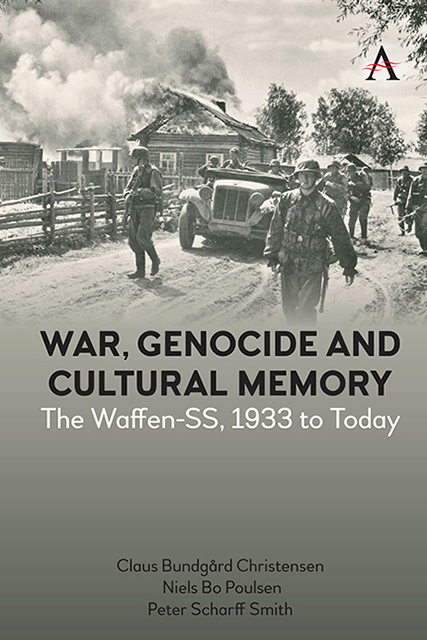Book contents
- Frontmatter
- Contents
- About the Authors
- Foreword
- Chapter One Introduction
- Part I The Organisational and Military History of the Waffen-SS
- Part II Ideology, Discipline and Punishment in the Waffen-SS
- Part III A European Nazi Army: Foreigners in the Waffen-SS
- Part IV Soldiers and War Criminals
- Part V Waffen-SS After 1945
- Epilogue The Nazi’s European Soldiers
- Appendix
- List of Abbreviations
- Bibliography
- Index
Chapter Five - Ideological Training in the Waffen-SS
Published online by Cambridge University Press: 08 June 2023
- Frontmatter
- Contents
- About the Authors
- Foreword
- Chapter One Introduction
- Part I The Organisational and Military History of the Waffen-SS
- Part II Ideology, Discipline and Punishment in the Waffen-SS
- Part III A European Nazi Army: Foreigners in the Waffen-SS
- Part IV Soldiers and War Criminals
- Part V Waffen-SS After 1945
- Epilogue The Nazi’s European Soldiers
- Appendix
- List of Abbreviations
- Bibliography
- Index
Summary
In January 1941, the Deutsche Zeitung in Norwegen featured an article about the Waffen-SS. The men in the black uniforms were described as ‘a new kind of German soldiers’, who were not only warriors but also ‘bearers of the revolution’:
Over the daily challenges he sees the greatness of the political programme that, under German leadership, will shape the new Europe. His thoughts fortified by the SS tuition, he sees the Nordic spirit come alive and, like a modern Viking, he pushes on towards the Greater Germanic future.
In other words, the soldiers were expected not only to fight with weapons in hand – they were tasked with a broader and more wide-ranging mission: Through ideological training, they were to be moulded into SS champions of Nazism throughout Europe.
From the early days of the Waffen-SS the ideological teaching was comprehensive and zealous, and in some ways the ambitions only seemed to grow as the war progressed. An instructive example can be found as late as seven weeks before the end of the war. On 19 March 1945, Division Hitlerjugend's Feldersatz Bataillon (replacement battalion) received a 40-pages instruction describing in considerable detail the future ideological training. The core message of the planned teachings was that the Jews had caused the adversities of the previous years. The war could however still be won, because providence had sent Hitler to Germany and since all Germans devoted themselves unconditionally to victory, the Third Reich would prevail. Indeed, as we shall see in the following, the detailed and elaborate ideological instructions and training manuals were not a peace time phenomenon, nor a mere sideshow, but on the contrary a central SS objective.
Ideology and the Waffen-SS
From the early thirties, the SS spent considerable resources on creating and nurturing an ideological worldview among its members. Disseminating Nazi norms and values, not only served as a way of demonstrating that the SS was the elite of National Socialism, it was also an important remedy in amalgamating the SS and the police and in making sure that the different parts of the SS did not grow apart. Not only did the SS idealize martial and military values, but also war in itself because, according to the SS, it served to eradicate the weak and the inferior and it exposed true leadership.
- Type
- Chapter
- Information
- War, Genocide and Cultural MemoryThe Waffen-SS, 1933 to Today, pp. 107 - 118Publisher: Anthem PressPrint publication year: 2022

